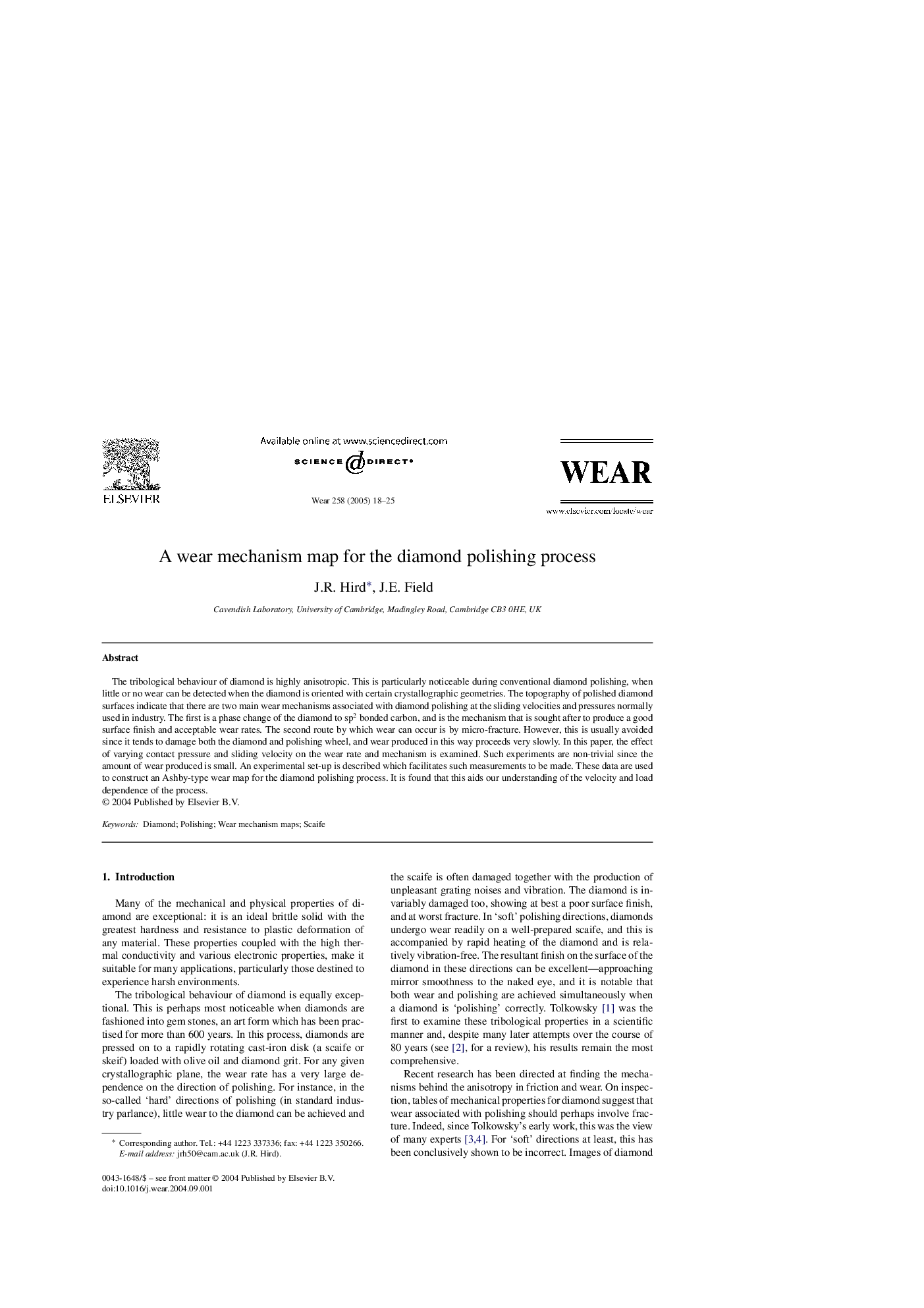| Article ID | Journal | Published Year | Pages | File Type |
|---|---|---|---|---|
| 9679590 | Wear | 2005 | 8 Pages |
Abstract
The tribological behaviour of diamond is highly anisotropic. This is particularly noticeable during conventional diamond polishing, when little or no wear can be detected when the diamond is oriented with certain crystallographic geometries. The topography of polished diamond surfaces indicate that there are two main wear mechanisms associated with diamond polishing at the sliding velocities and pressures normally used in industry. The first is a phase change of the diamond to sp2 bonded carbon, and is the mechanism that is sought after to produce a good surface finish and acceptable wear rates. The second route by which wear can occur is by micro-fracture. However, this is usually avoided since it tends to damage both the diamond and polishing wheel, and wear produced in this way proceeds very slowly. In this paper, the effect of varying contact pressure and sliding velocity on the wear rate and mechanism is examined. Such experiments are non-trivial since the amount of wear produced is small. An experimental set-up is described which facilitates such measurements to be made. These data are used to construct an Ashby-type wear map for the diamond polishing process. It is found that this aids our understanding of the velocity and load dependence of the process.
Keywords
Related Topics
Physical Sciences and Engineering
Chemical Engineering
Colloid and Surface Chemistry
Authors
J.R. Hird, J.E. Field,
